A Fairy Tale on the Workings of a Digital Camera
Seamus Parsons was a long lost cousin of William Parsons, 3rd Earl of Rosse. Now, William Parsons was famous for his ‘Great’ 72-inch reflecting telescope known as the ‘Leviathan of Parsonstown’, which he used to study the then mysterious objects known as nebulae. Seamus on the other hand, although a somewhat eccentric but gifted scientist, was renowned in Ireland for having cheated a Leprechaun out of his ‘pot of gold’ at the end of the rainbow. In punishment for this he had been cursed in a rather unusual manner.
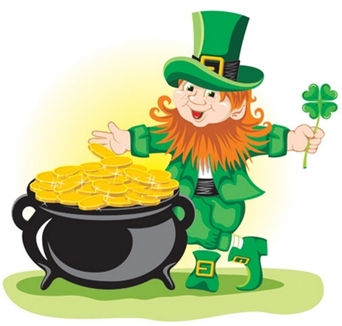
Freckles O'Gold - Leprechaun with his 'Pot O'Gold'
Seamus was the owner of a rectangular field in which he grew Leeks. His Leeks had been the biggest and finest in all the ‘Emerald Isle’. They were his pride and joy, and the ‘love of his life’, that was until Freckles O’Gold the Leprechaun he had tricked - gained his revenge. Now Freckles was the cleverest of all his kind, and through the magical skills that all Leprechauns possessed - placed an invisible dark cloud above Seamus Parsons’ field of Leeks, which meant that every day, no matter what the weather was like elsewhere, his prize vegetables were drenched in a downpour of rain far greater than that which even Ireland was accustomed to! They were ruined, despite their owner’s best efforts. Now the gardeners among you will cry - Leeks need a lot of rain, that’s why Ireland is good for growing them! But, you forget Freckles O’Gold - he had added some leek killer to the rain. What could Seamus Parsons do? He pleaded with Freckles – how can the curse be lifted? Freckles being not entirely heartless said that if Seamus could draw an accurate picture in 65,536 shades of grey of the invisible rain cloud, he would remove the curse on his Leeks.
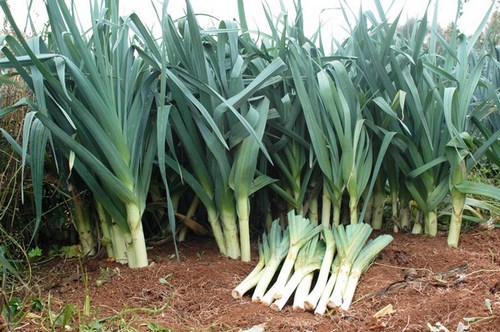
Seamus Parsons - Field of Prize Leeks
Now Seamus being also a clever man and a scientist too, after a considerable amount thought, came up with an ingenious solution to what at first sight seemed an impossible situation – How can you find the shape and greyscale of something you cannot see or touch? He used the only thing he had by the bucket load – rain. One morning he went out to the local hardware store and bought all the buckets in Ireland nearly eleven million of them or more precisely some 10,709,376, as that was all he could get. He then arranged them in rows and columns on his Leek field – 4008 rows and 2672 columns. But before he did this he built a novel mechanism which could tip the contents of each bucket into a very special measuring jug he called an Analogue to Digital Converter (ADC), which had gradations from 0 to 65,536.
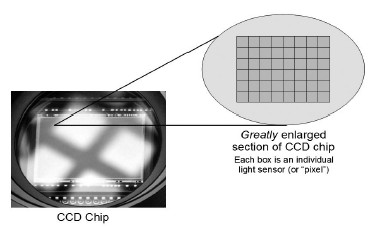
The Charged Coupled Device 'Chip'
The measuring jug was then put on a steam driven railway system so that it could move from bucket to bucket in sequence around the field. In this way he could determine how much rain fell in a particular square cell of the field in a particular time. The buckets I should have mentioned were square, it was Ireland after all! He also rigged up a mechanical shutter in the form of a sheet of canvas which could cover very quickly the entire field after a predefined exposure time to the rain.
He then made use of a few thousand clever local pixies to do the measuring and convert the level of rainwater in each bucket into a number from 0 which meant no rain fell in a bucket to 65,536 for a full bucket. As Seamus was a little deaf he referred to his little helpers as pixels, a name he also used for the each of the 10,709,376 small areas of his Leek field. Not wishing to complicate matters he for some unknown reason called the railway system he had built a Pixel Multiplexer (PM). He was now ready for the rain; and so was his new Charge Coupled Device, the name he had given to his system on the grounds that he was in charge of a device which was coupled to other things – all perfectly logical!
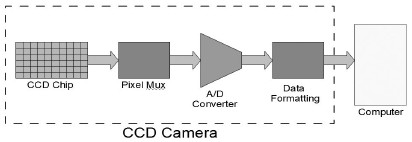
Components of a Modern Digital Camera
When the next rain came the buckets collected the water and after a five minute exposure he got his pixies to pull the shutter over his leek field. The pixels were measured by the ADC with the aid of the PM and the army of pixie computers made a note of the numbers for each of the 10,709,376 pixels. The head pixie known as Willard O’Boyle and his assistant George O’Smith processed the readings into a pixel image. The value 0 was denoted as Black and 65,356 was White, and the other values as in between shades of grey.
Seamus Parsons now had his first rough image of the dark cloud he could not see, and because it was so far away it been invisible to all but Freckles O’Gold. Triumphantly Seamus then went to see Freckles O’Gold, who when he saw the picture he was furious. How could an ignorant Irish Leek farmer beat the Einstein of the Leprechauns? Yes, Seamus was right the dark cloud above his Leeks was the head of a black horse owned by none other Freckles’ great friend the Leprechaun known as Grim O’Reaper. With the revelation of the truth Freckles O’Gold jumped onto the top of a nearby rainbow and buried his head in his brand new pot of gold at its end – muttering words not meant for the ears of a pixie let alone a child.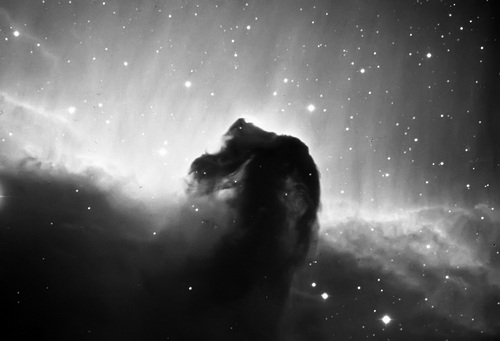
Horsehead Nebula in the Constellation of Orion
So forgot all you have read that the dark cloud known as the Horsehead Nebula was first imaged by William Henry Pickering on the 6th of February 1888 and discovered by Williamina Paton Stevens Fleming. It is not the case. Our black steed was in fact first captured by Seamus Parsons in an Irish Leek Field and discovered by Freckles O’Gold on a trip across a rainbow to the distant land his forefathers called O’Rion. Furthermore the CCD was not invented by Willard Sterling Boyle and George Elwood Smith in 1969, but by Seamus Parsons many years before in the land of Leeks and Leprechauns we call Ireland. It is also remarkable that Seamus’s CCD was very similar in specification to one developed by the Santa Barbara Imaging Group which they called the STL 11000 series. I wonder where they got the idea from.
The above is an extract from the Book the 'Catchers of the Light' which tells of the 'Forgotten Lives of the Men and Women (and Leprechauns) Who First Photographed the Heavens'.
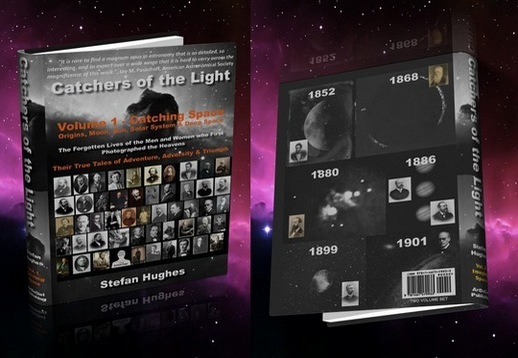
Available in Print or as an eBook.
Read More...